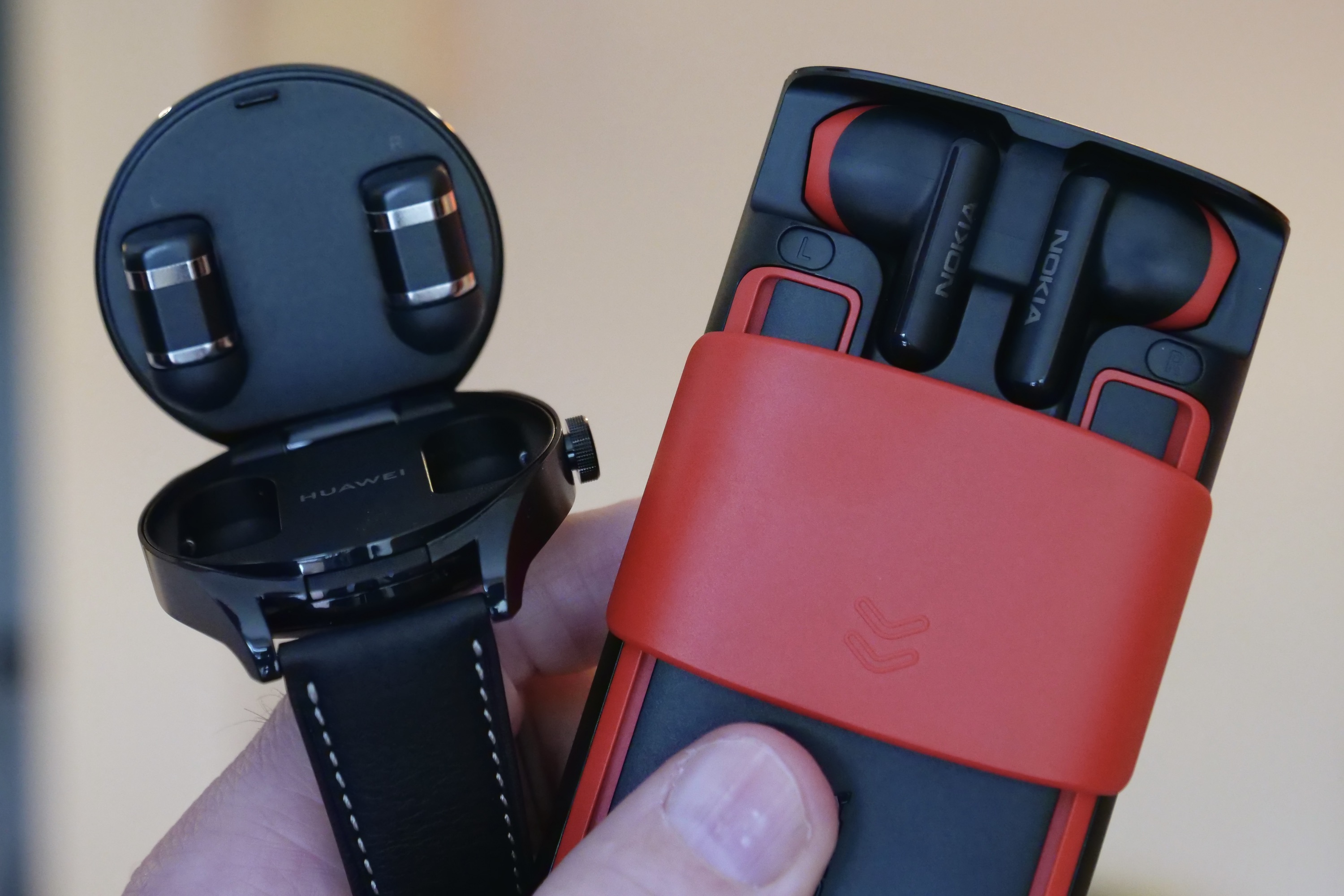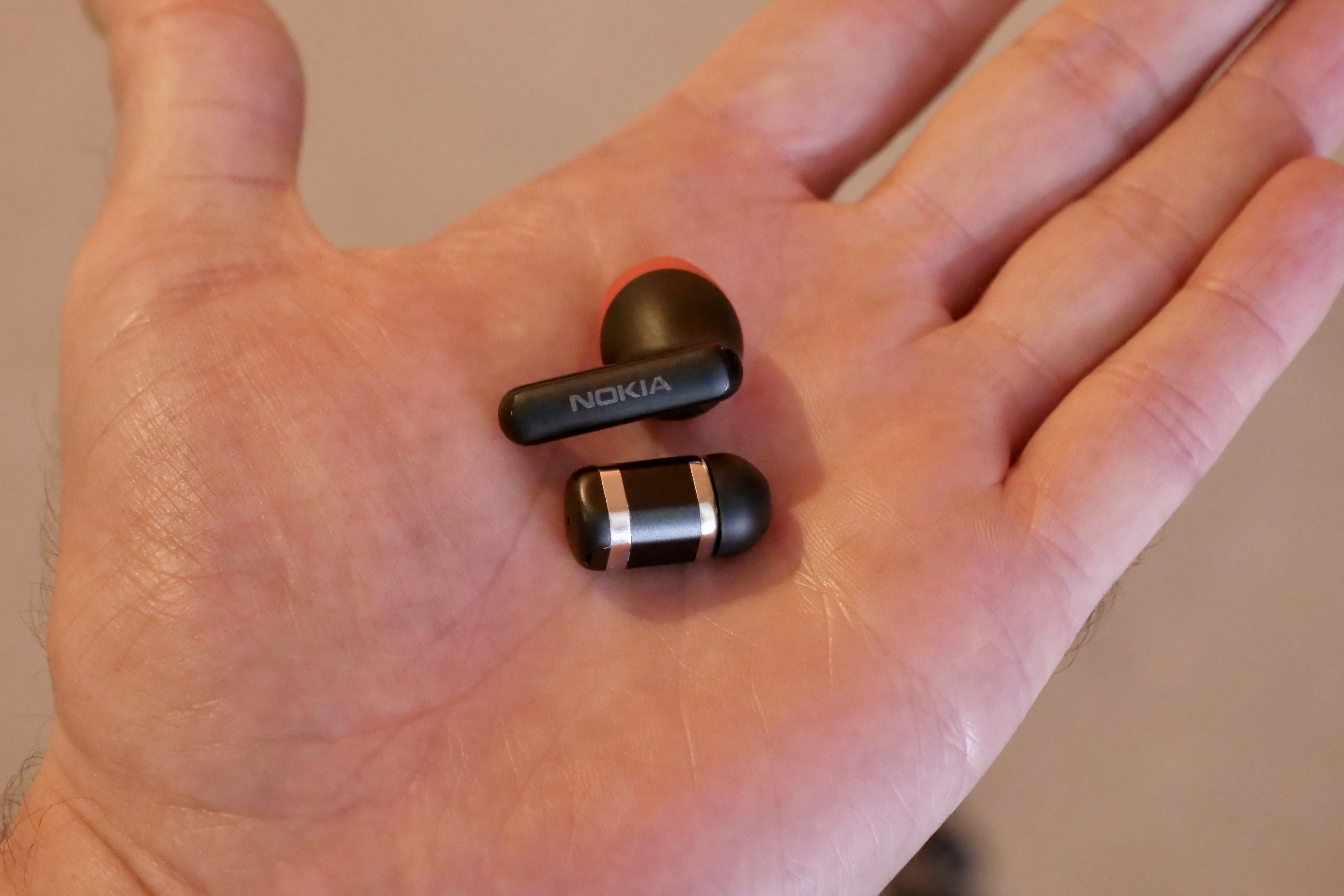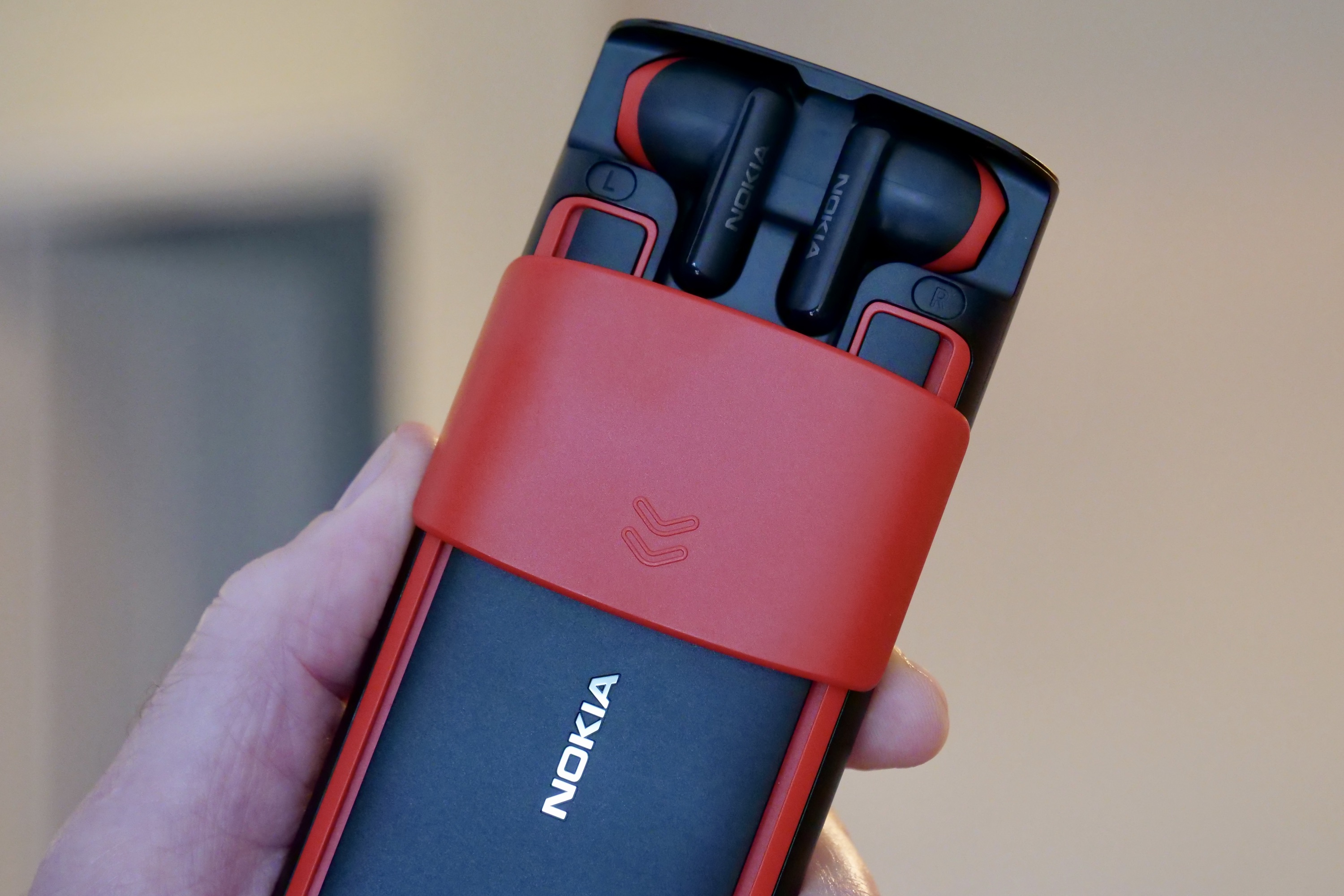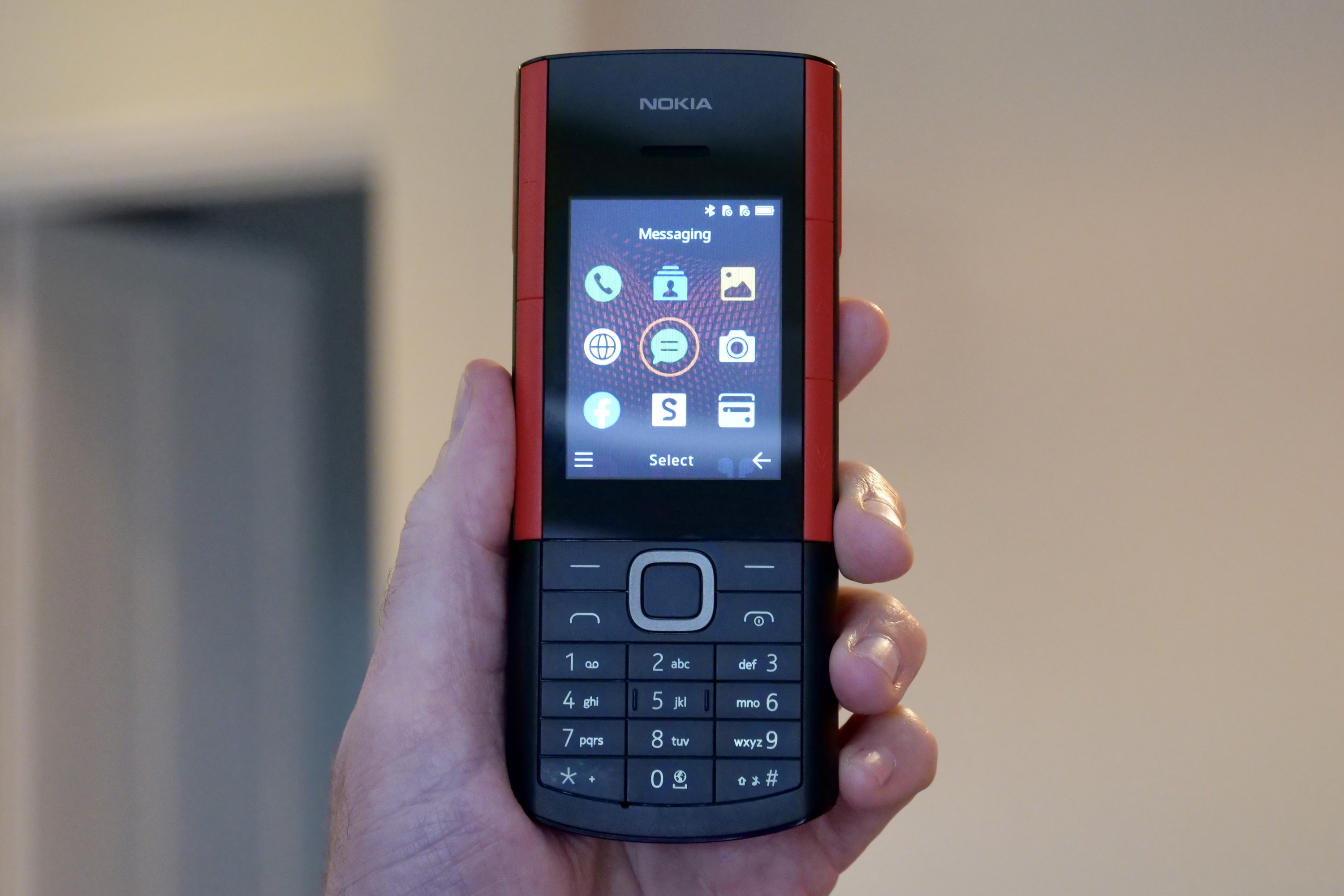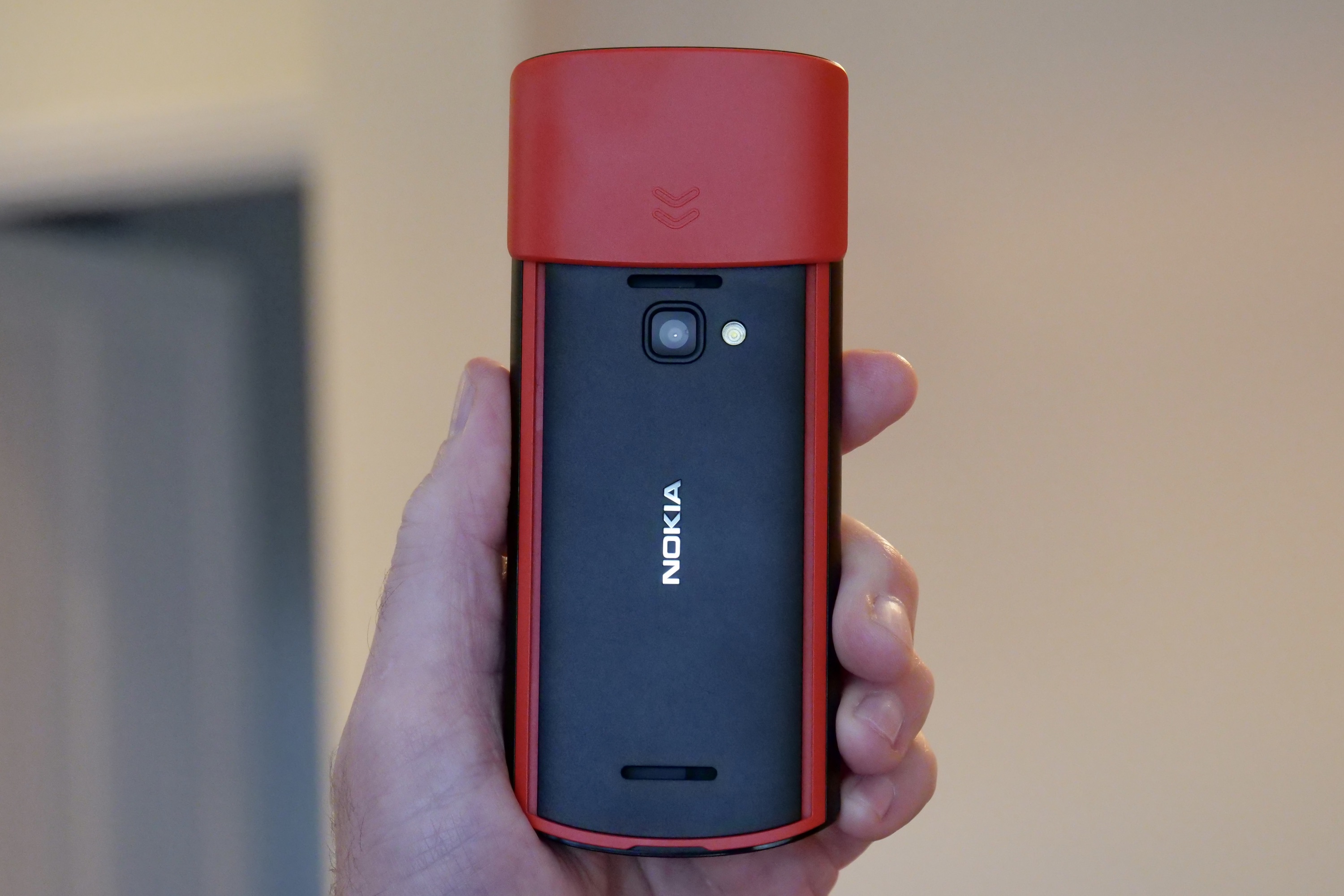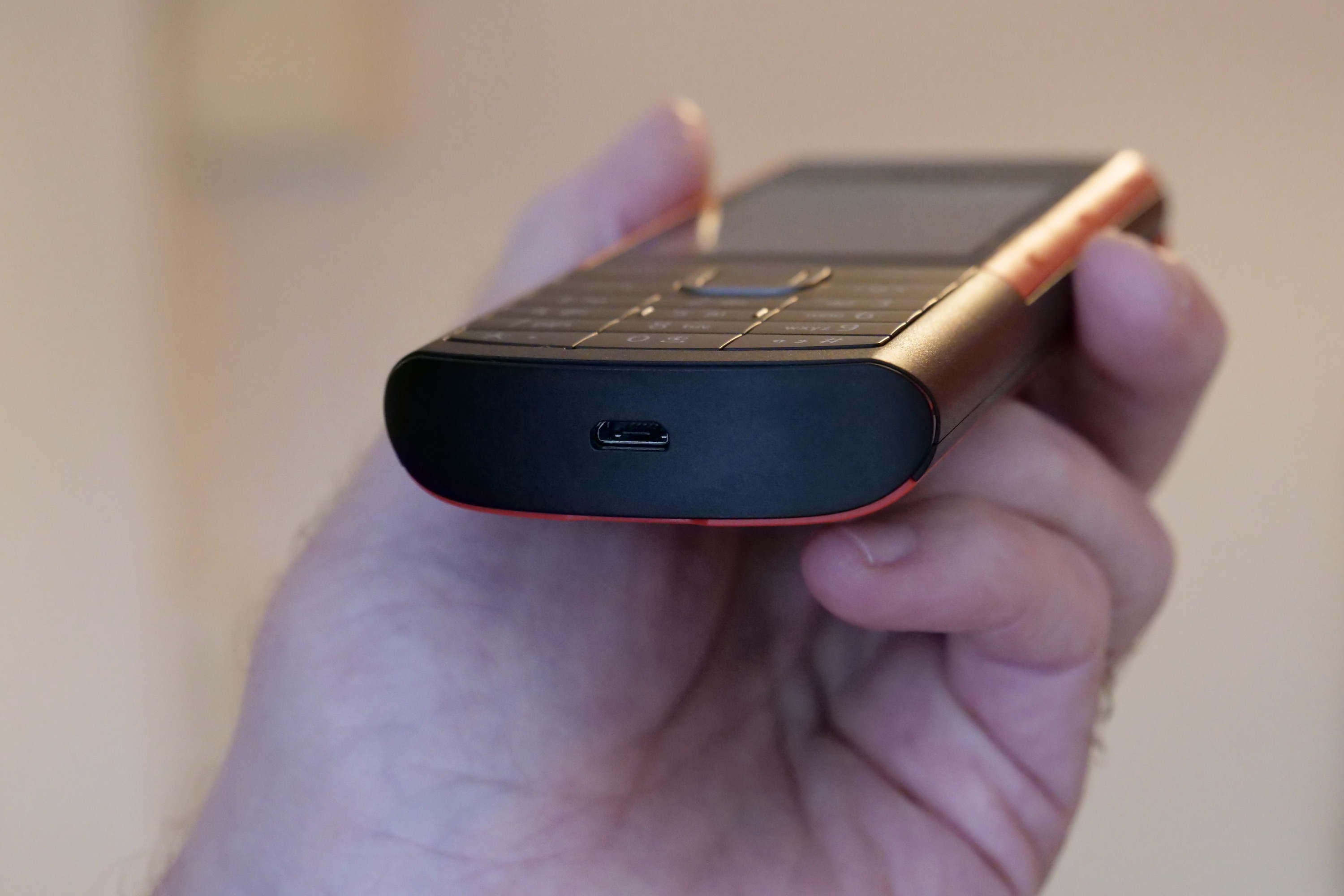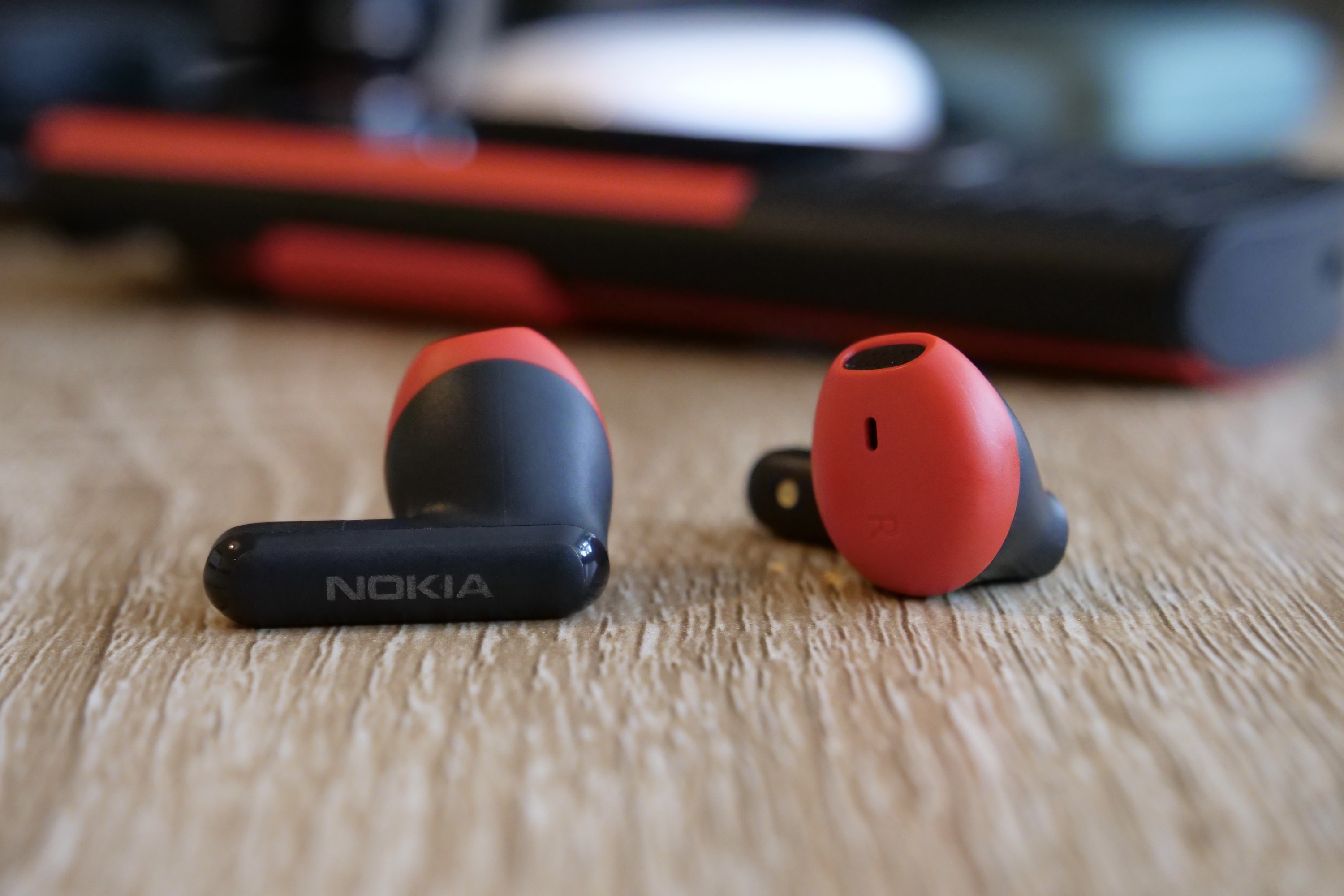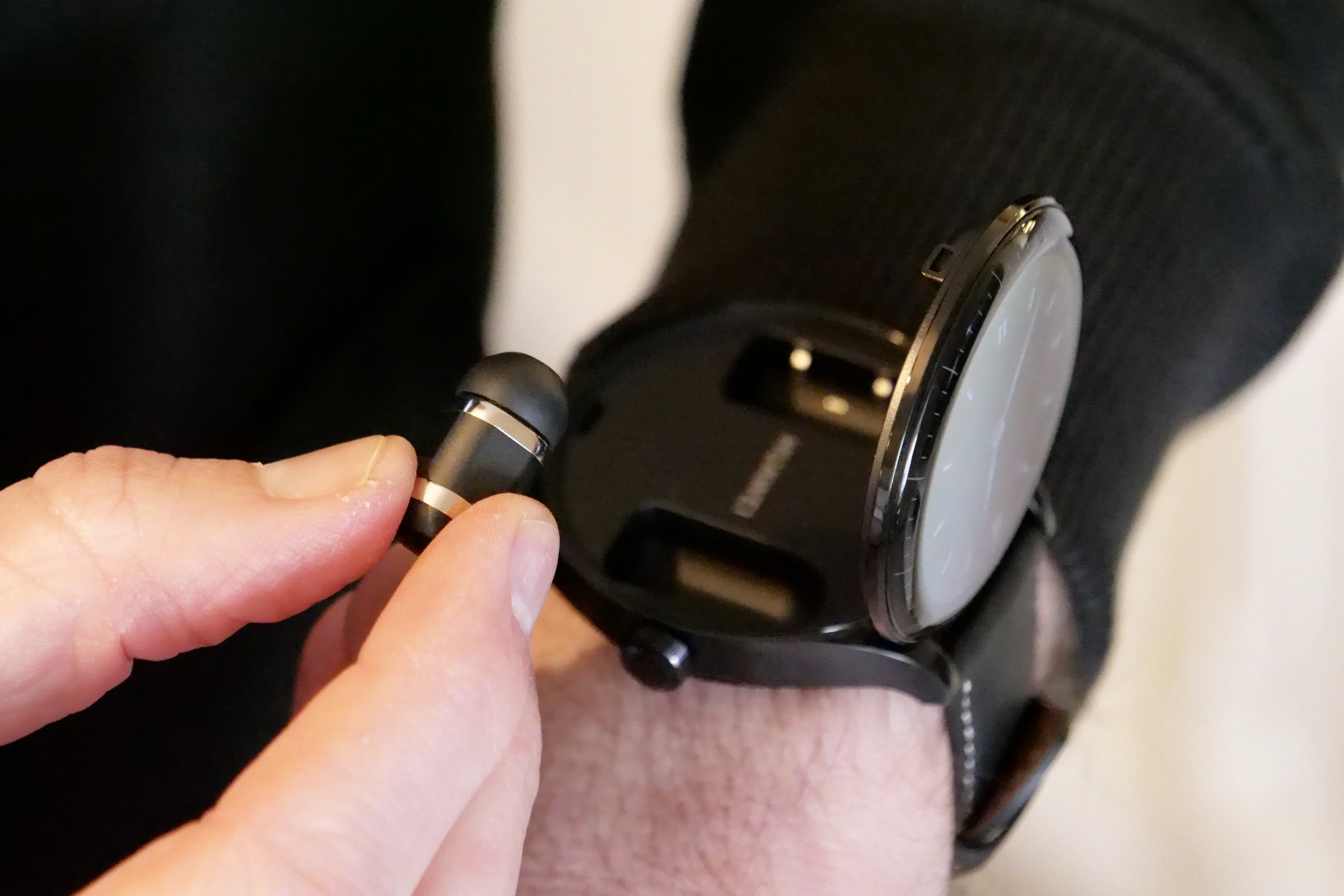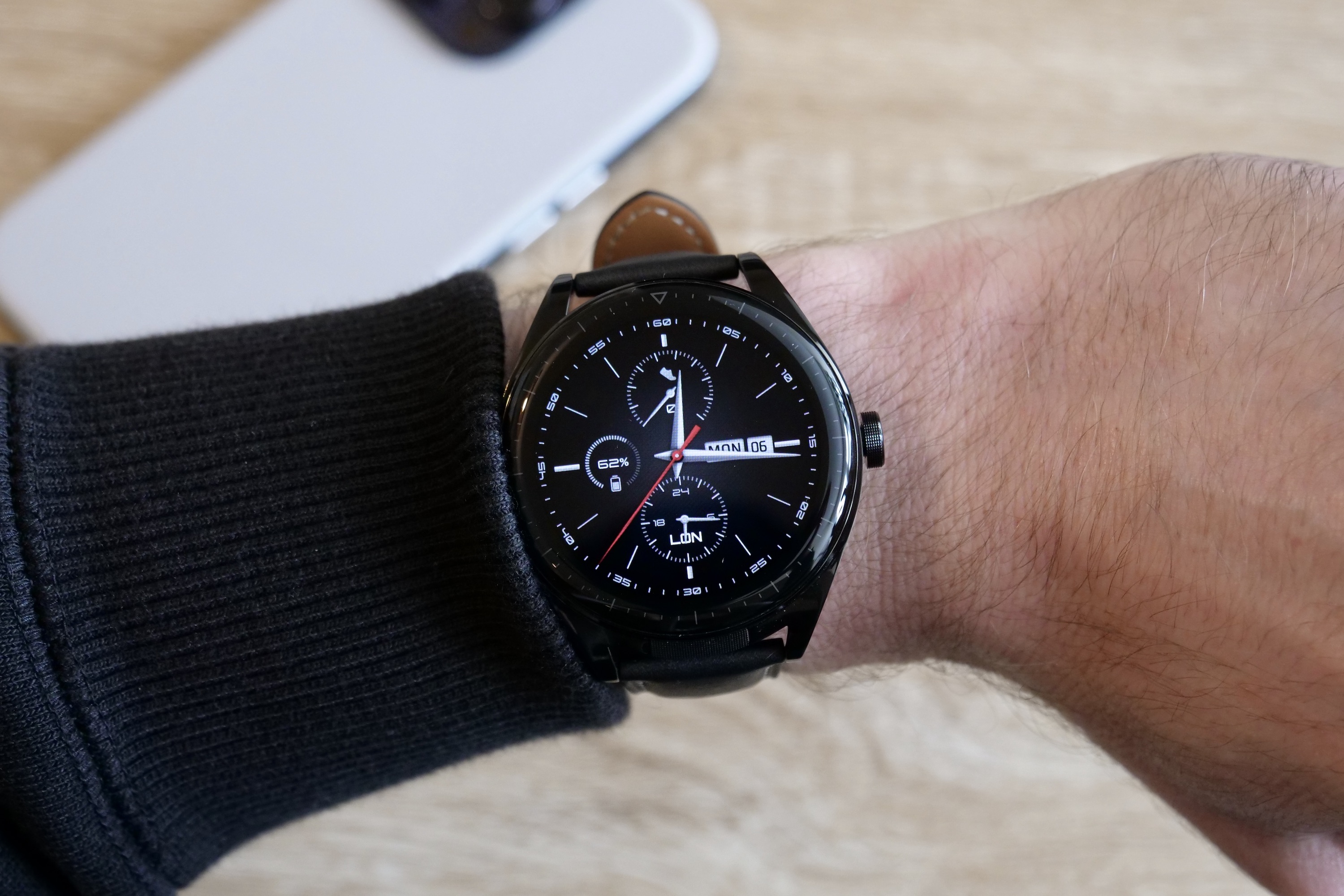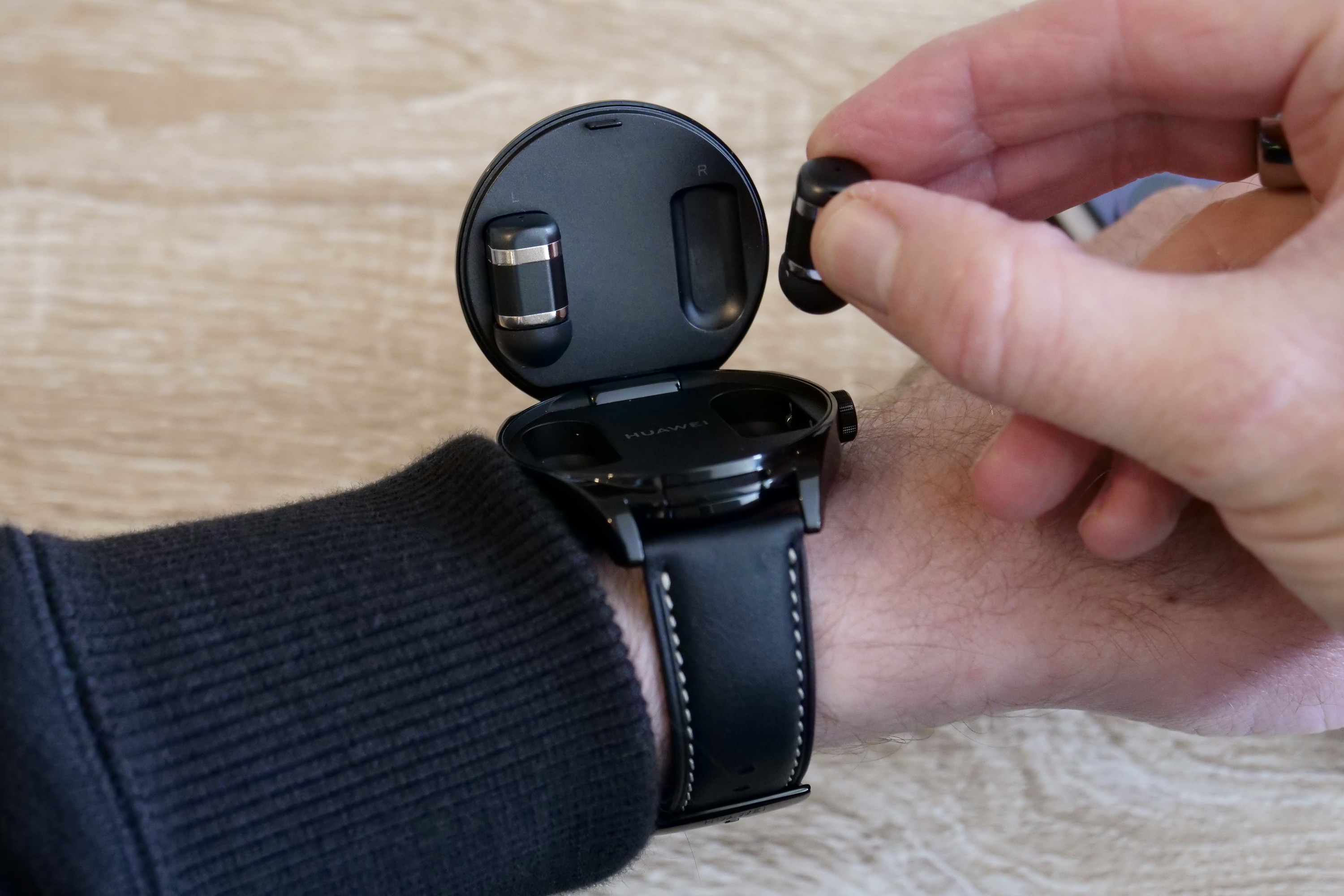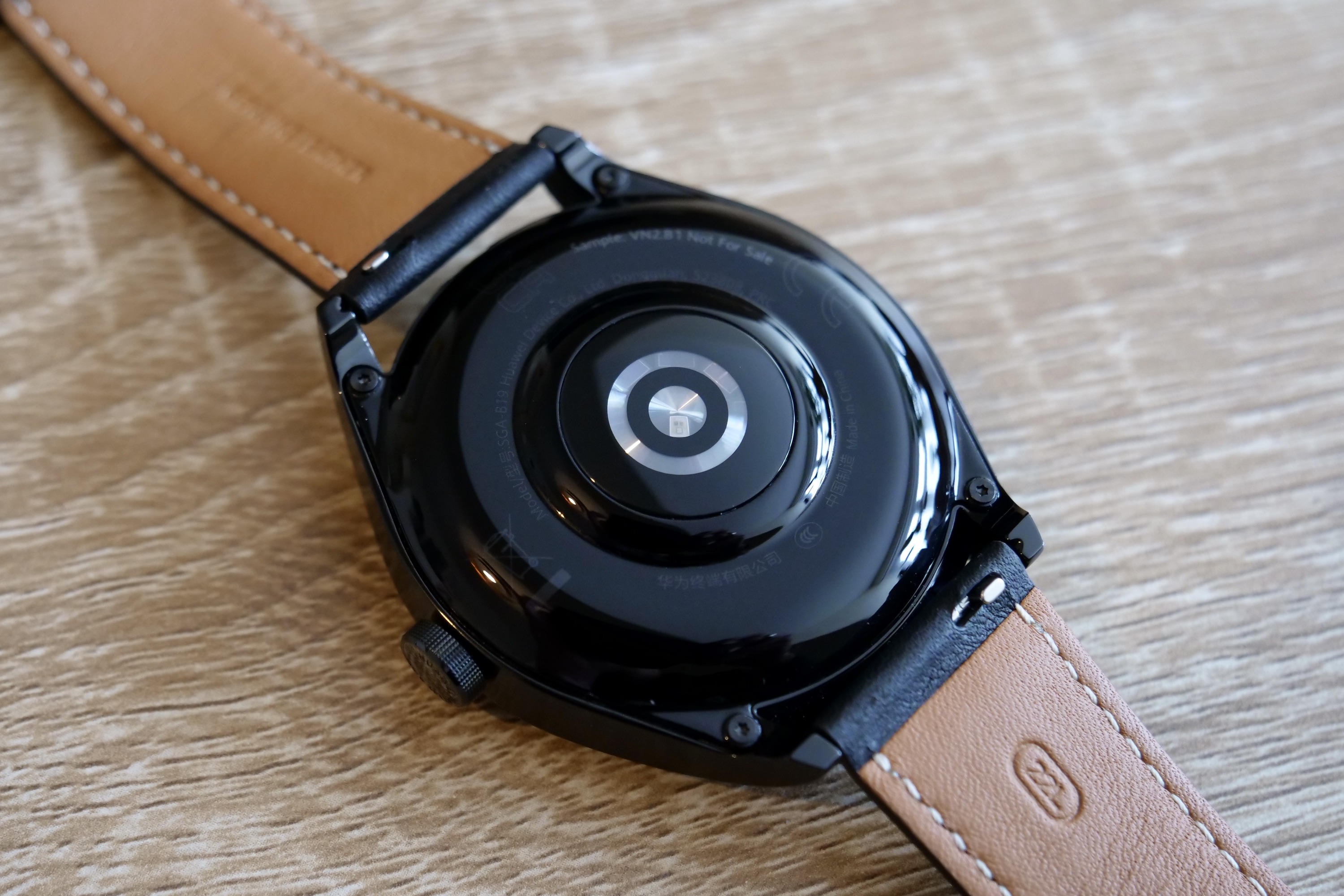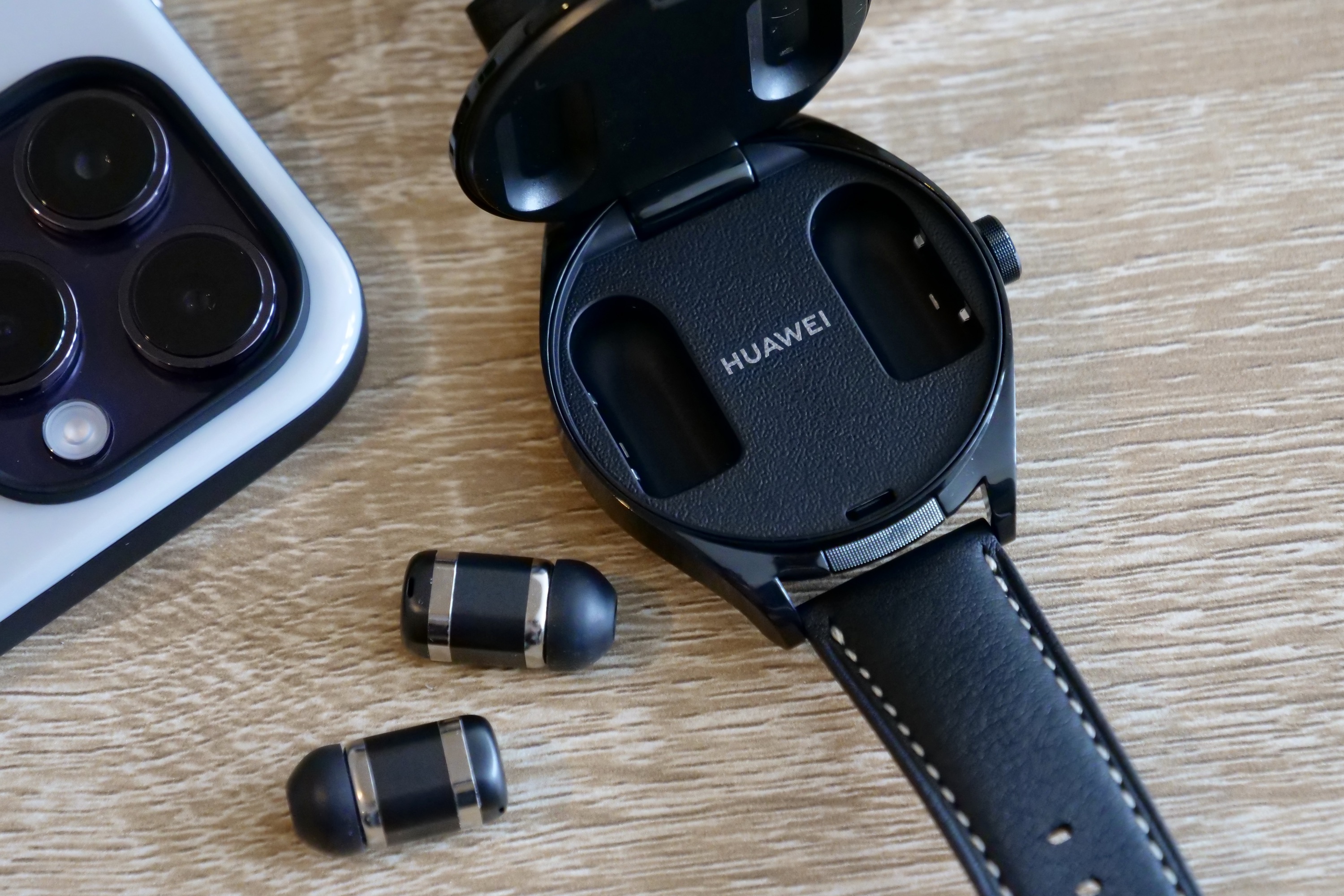If you’re intent on not keeping your true wireless earbuds in a normal charging case, and want to hide them inside a different gadget, now is your time. The Huawei Watch Buds is a smartwatch with a pair of true wireless headphones inside, and the Nokia 5710 XpressAudio is a 4G phone that stores a pair of earbuds in the back.
It’s a bizarre niche that I’m surprised contains two products. I’ve used them, so it’s my duty to report that both are a bit silly — and I don’t want to use any more of them, thank you very much. However, for the few people out there thinking they want to buy one, this is what they’re like. For everyone else, you get to marvel at two of the oddest tech products seen in a while.
Phone or smartwatch?

If you never have a pair of earbuds with you when you need them, these are products you may consider. But what are they like? The Huawei Watch Buds is an impressive piece of engineering. It’s well built, has mostly been properly thought out to make living with such an odd product fairly easy, and is made of high-quality materials. The Nokia 5710 XpressAudio is made of plastic, doesn’t run Android, doesn’t have 5G, and the earbuds are hidden behind a plastic slider — meaning it doesn’t have anywhere near the same wow factor as the Watch Buds’ flip-top lid.
What each is supposed to do is give you a pair of earbuds that are always ready to use, in addition to all the expected benefits of a smartwatch or a phone. For either to make sense, though, the earbuds have to be easy to use before anything else. These products are supposed to promote convenience, and if they are frustrating, or lack features, then why would anyone buy them over a pair of “normal” earbuds?
Astonishingly, Huawei has released the Watch Buds without the ability to connect the earbuds to a device other than the phone to which the smartwatch is paired. It means you can only use them with that phone. They can’t be paired with your PC, tablet, or any other Bluetooth device yet. The feature is supposed to be activated through a software update in the future, but there are no details on when this will happen. It breaks the Watch Buds entirely for me.
At least the Nokia 5710 XpressAudio’s earbuds connect to any Bluetooth device, and despite it not being a smartphone, the phone’s basic operating system makes the process incredibly simple. It takes moments to pair them with my Mac Mini M1, then disconnect and reconnect to the phone again. The process is logical and fast, and it makes having the earbuds always to hand in this way actually useful. This alone means it fulfills the brief of adding convenience to everyday life, something the Watch Buds does not.
Listening to the earbuds
The more expensive Huawei Watch Buds has a longer feature list, including Active Noise Cancelation (ANC), and better sound quality from its tiny earbuds. The XpressAudio earbuds are as basic as earbuds get, being made from plastic and not even having silicone ear tips, let alone ANC.
Compare the two, and it’s obvious the Huawei Watch Buds sound much better than the XpressAudio earbuds, with more clarity and bass, and less distortion at higher volumes. However, they aren’t faultless, and the sound and ANC performance from Apple AirPods Pro 2, the OnePlus Buds Pro 2, and the Sony WF-1000XM4 is vastly superior. I don’t find the fit all that comfortable either and have struggled to get them to sit correctly in my ears.
The Nokia earbuds are surprisingly comfortable, and although they don’t isolate you from the outside world all that much, the convenience suits the casual nature of the product. However, the sound is average at best, there’s quite a lot of hiss when you reach even half-volume, and the bass response is muddy and unpleasant. I definitely wouldn’t sit down and relax with my favorite music listening on the Nokia XpressAudio 5710, but I probably wouldn’t do that with the Huawei Watch Buds either.
Any app on your phone plays audio through the Huawei Watch Buds, while the XpressAudio has a MicroSD card slot to stream your own music, and an FM radio too. The phone does not have Wi-Fi, so if you want to stream from an online source (it has a 4G connection and a browser), you’ll need to factor in the cost of data.
Despite this, there’s a 90s vibe and quaint simplicity to the 5710 XpressAudio that’s weirdly refreshing. It has big buttons on the side of the case to control volume and track position, a VGA camera on the back, a MicroUSB charger, and a removable battery too.
You can do a lot better for less

What is the price of keeping your earbuds inside a smartwatch or a phone? The Huawei Watch Buds cost a massive 450 British pounds, or around $540, while the Nokia 5710 XpressAudio costs 75 pounds, or $90. In other words, the Watch Buds costs more than an Apple Watch Series 8, while the Nokia phone costs less than some bands for the Apple Watch.
Which one should you buy? The Huawei Watch Buds is hobbled by a feature restriction at the moment and is much too expensive anyway. At least the Nokia phone doesn’t cost much money, but the quality and materials reflect this. If you really must buy one, the Nokia 5710 XpressAudio is oddly cute, suitably versatile, and really cheap. I don’t hate it, but it’s a proper step back in time. It even has Snake installed. Buy it for your kids, and I expect they’ll love it.
Honestly, though, don’t buy either of them. There are excellent true wireless earbuds available for $100 upwards, brilliant smartwatches available for as little as $230, and burner phones for less than $50. Even buying the well-reviewed OnePlus Nord N300 and a pair of Earfun Air Pro 3 together costs about $320. Looked at it like this: putting two products together to make a single mediocre one, and then rushing out to buy the result, makes no sense.
Hopefully, now HMD Global and Huawei have both stuffed true wireless earbuds where they don’t belong, no other manufacturers will feel the need to do the same, and we won’t see earbuds inside a tablet, laptop, or camera. That way, this gimmicky trend can fade away as quickly as it arrived.
